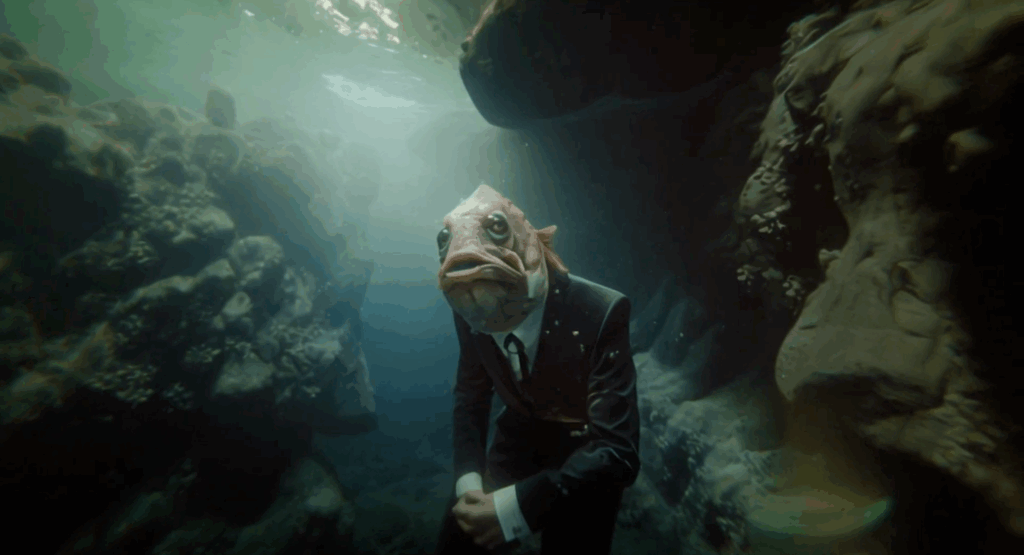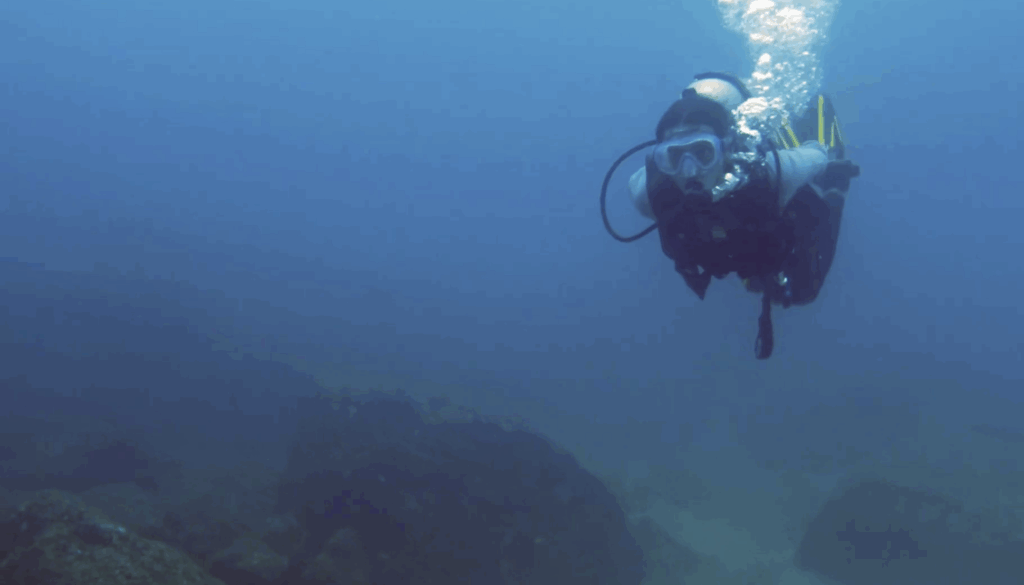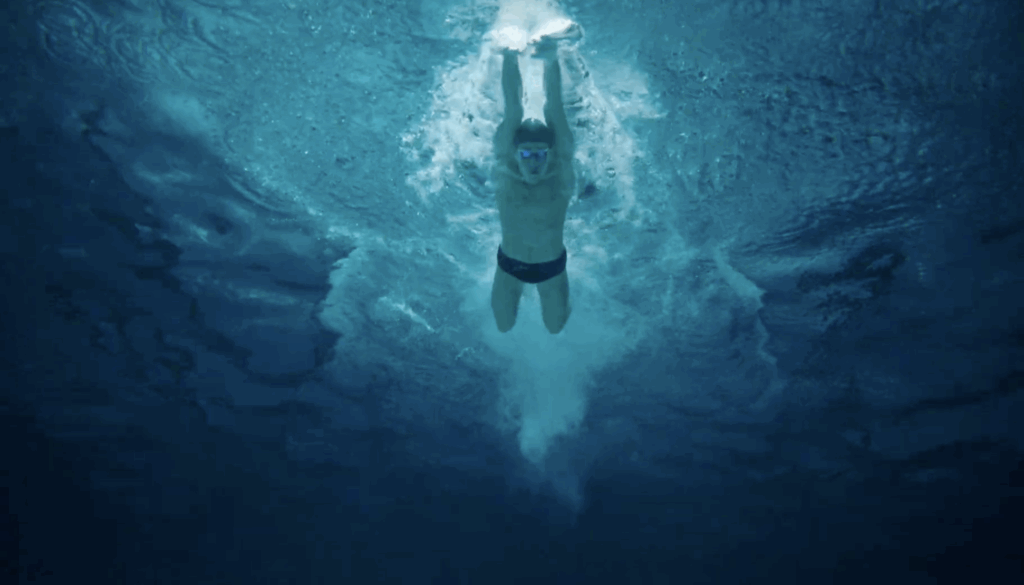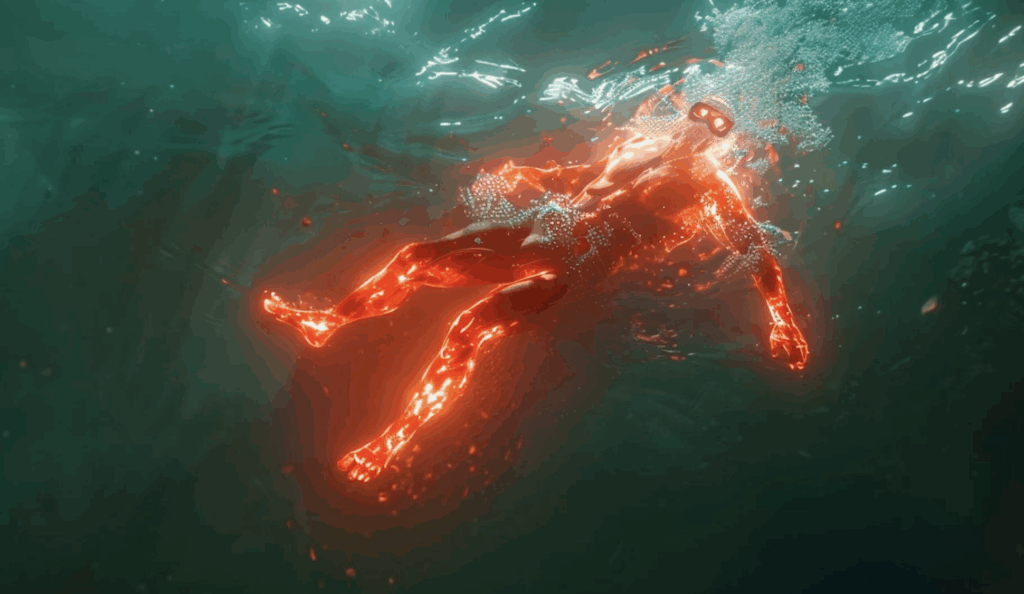Humans are built for life on land, but what if evolution had taken a different path and sent us back into the ocean? To imagine this, we need to look at some of the ocean’s most incredible creatures and explore how their unique adaptations could be applied to a fully aquatic human.

The results wouldn’t be graceful mermaids, they would be a radical reworking of the human body, designed to survive the pressures, darkness, and vast distances of the deep sea.
Breathing and Oxygen Storage
One of the biggest challenges humans would face underwater is breathing. Unlike dolphins, which can exchange 90% of the air in their lungs in a single breath, humans can only manage 15 to 20%. This means we would need an entirely new respiratory system.

Dolphins achieve their impressive breath-holding ability with a blowhole on top of their heads, allowing them to take deep breaths in seconds before diving again. An underwater human would likely evolve a similar adaptation, a blowhole for rapid surface breathing, combined with lungs designed to store and efficiently use oxygen.
Withstanding Ocean Pressure
The deeper we dive, the greater the pressure, and humans are fragile in comparison. At just 100 meters below the surface, the pressure is equivalent to an additional 66 kilograms pressing on every square inch of our body. To survive these conditions, humans would need a flexible, whale-like ribcage with collapsible lungs. This design allows deep-diving whales to compress their chest cavities safely, protecting internal organs and preventing barotrauma or lung collapse.
Swimming Efficiency
Even with oxygen and pressure adaptations, humans would still struggle to move efficiently underwater. Here, the blue shark provides inspiration. Sharks have torpedo-shaped bodies and specialized skin covered in tiny tooth-like structures, which reduce drag and allow them to swim at speeds of 19 kilometers per hour. An aquatic human would likely adopt a streamlined, shark-inspired body with similar skin to maximize speed and maneuverability, helping us reach the surface quickly to breathe or escape predators.

Camouflage and Communication
The ocean is full of dangers, so survival requires both offense and defense. Squids have mastered this with a combination of color-changing skin and bioluminescent displays. Specialized pigment cells, known as chromatophores, allow them to shift patterns and blend into their environment, while photophores create glowing displays in the dark. For humans, evolving these traits could allow for camouflage, communication, and even hunting in the deep sea, giving us a survival edge in a hostile environment.
Sensing the Environment
Finally, humans would need to evolve new ways of perceiving the ocean. Deep-sea creatures have adapted to darkness with enhanced vision, lateral lines, or other sensory systems. Our new underwater human would likely require similar adaptations, such as larger, more sensitive eyes or skin capable of detecting movement and vibrations, helping us navigate, hunt, and avoid predators in an environment where light is scarce.

Imagining the Future
While this underwater human is purely speculative, it provides a fascinating look at evolution in action. By borrowing traits from whales, dolphins, sharks, and squids, we can imagine a body perfectly adapted to life beneath the waves. It is a radical rethinking of what it means to be human, highlighting the incredible ways life on Earth adapts to even the most extreme environments.



























